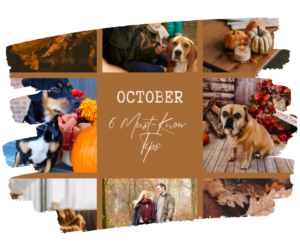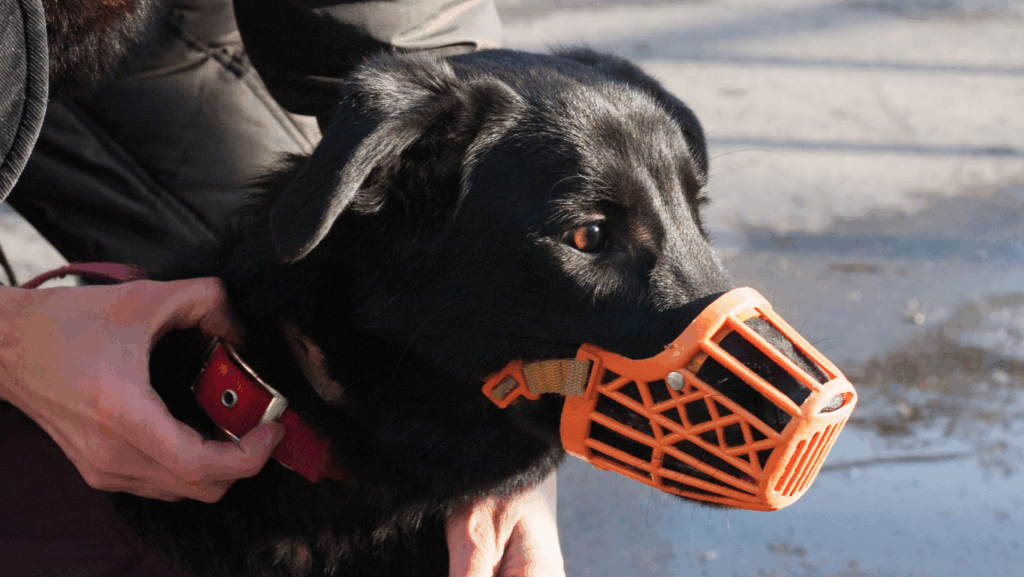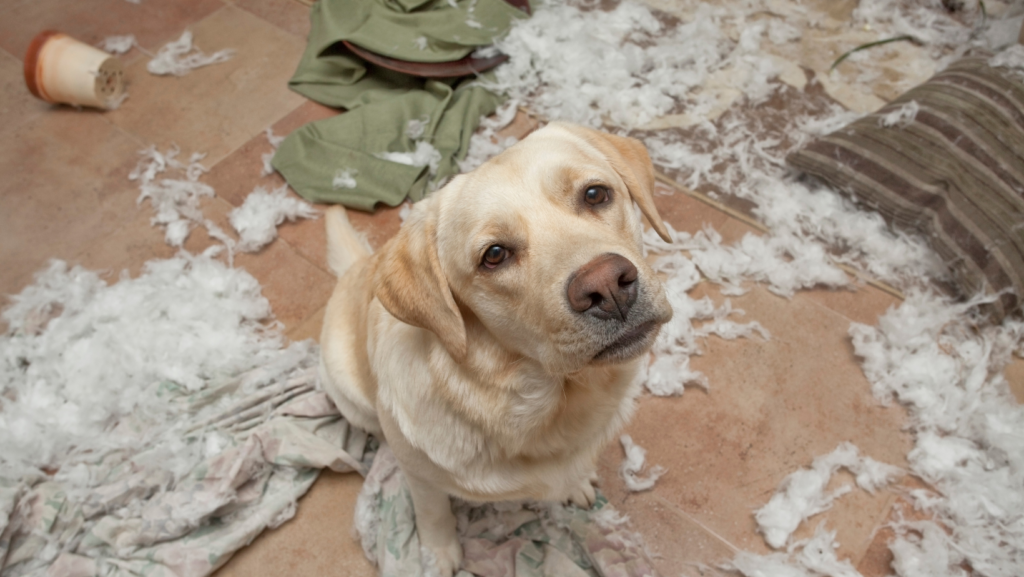Keeping Our Furry Friends Thriving in Autumn!
Autumn: that magical season when the world dons a cloak of vibrant colors, and there’s a distinct chill in the air, signaling winter’s approach. As we excitedly unpack our warmest sweaters and indulge in seasonal delights, our four-legged family members are right beside us, equally eager for the joys this season brings. However, as with every season change, there are specific considerations to keep in mind for our pets. Let’s take a deeper dive!
✅
Monitor Allergies: Because Ah-choo Isn’t Just a Cute Sound
Autumn is a season synonymous with colorful leaves and cool breezes. Many of us eagerly anticipate the beauty of trees shedding their leaves, leading to weekends spent raking and jumping into the amassed piles. This festive activity is something that brings joy to families, often signifying the change from the warmth of summer to the chilly embrace of winter. However, what most people might not realize is that amidst all this fun, our four-legged companions may be at risk.
Just like humans, dogs can also fall prey to seasonal allergies. As we relish the fallen leaves, we might be oblivious to the potential hazards they present to our pets. These leaves, especially when left damp and unchecked, create an environment conducive to mold growth. Mold, which thrives in moist conditions, releases spores that can be harmful when inhaled or come into contact with the skin.
For our canine friends, mold can be a potent allergen. A dog’s immune system can react adversely to these mold spores, leading to symptoms such as itching, sneezing, watery eyes, or even more severe respiratory issues. As dog owners, it’s essential to be vigilant during these months, ensuring that our pets don’t spend too much time in areas where mold might thrive and regularly checking for any signs of allergies. An ounce of prevention is worth a pound of cure, and by staying informed, we can guarantee that both we and our pets enjoy the season to the fullest.
🌟✨ Did You Know? ✨🌟
Pollen from ragweed, one of the main causes of fall allergies in humans, can also affect our pets.
🛠️💡 Pro-tip: 💡🛠️
Besides the common symptoms of sneezing and itching, pay attention to ear infections and inflamed skin. If you suspect your dog is allergic, a quick vet visit can offer relief options like antihistamines or even allergy shots tailored for pups.
———
✅
Safe Halloween Treats: Ensuring It’s All Treats, No Tricks
Halloween is a much-anticipated occasion celebrated with enthusiasm and joy across various parts of the world. The atmosphere is filled with eerie decorations, intricate costumes, and of course, the delightful allure of candies. These sweet treats are the highlight for many, especially children, eagerly going door-to-door with their festive baskets. And it’s not just the kids; many adults, too, find it hard to resist the charm of these sugary delights, indulging in the festive spirit.
However, amidst the fun and excitement, there lurks a significant concern for pet owners, especially those with dogs. Chocolate, a popular candy ingredient during Halloween, poses a severe risk to canines. The compounds found in chocolate, namely theobromine and caffeine, can be incredibly toxic to dogs. Even a small amount, when ingested, can lead to symptoms such as vomiting, diarrhea, rapid heartbeat, and in severe cases, can prove fatal. It’s not just chocolate; many candies contain artificial sweeteners, like xylitol, which can also be harmful to dogs, leading to a quick drop in blood sugar and liver failure.
Given the abundance of candy around Halloween, it’s crucial for dog owners to exercise caution and ensure their pets don’t get their paws on these treats. While the festive spirit is infectious, and sharing seems like the norm, it’s vital to remember that what’s sweet and enjoyable for humans might be perilous for our four-legged companions. Keeping candies out of reach, educating children about the dangers of feeding sweets to pets, and being extra vigilant during this season can ensure a happy and safe Halloween for everyone in the household.
🌟✨ Did You Know? ✨🌟
Theobromine in chocolates can cause vomiting, diarrhea, rapid breathing, and even seizures in dogs.
🛠️💡 Pro-tip: 💡🛠️
Always keep candy out of reach and educate children about the dangers of sharing their loot with pets. But, why leave our pets out of the Halloween fun? Preparing dog-friendly treats or buying some from pet stores can let them join in the festivities safely!
———
✅
Visibility on Walks: Ensuring Every Walk Is a Safe Walk
The shift in seasons, with its gradual decrease in daylight, often brings about a noticeable change in our daily routines. As days become shorter, many of us find ourselves adapting to the limited sunlight. It’s not uncommon for activities that once occurred under the warm, radiant glow of the evening sun to now be enveloped in the cool embrace of twilight. These transitions, although natural, can sometimes catch us off guard, especially when we find that our usual evening walk is no longer bathed in the familiar light but instead is gradually succumbing to the shadows of impending darkness.
Safety during these dimly lit excursions becomes an area of heightened concern. What was once a clear path can now be filled with potential hazards that are harder to discern. Uneven sidewalks, low-hanging branches, and even other pedestrians or animals can become unpredictable obstacles. Additionally, decreased visibility means that others, especially motorists, may find it challenging to spot walkers, increasing the risk of accidents.
To navigate these shorter days safely, it’s essential to take proactive measures. Investing in reflective clothing or accessories can make one more visible to oncoming traffic. Carrying a flashlight or wearing a headlamp not only illuminates one’s path but also signals one’s presence to others. Moreover, choosing well-lit routes and being more alert to the surroundings can further enhance safety. By acknowledging the challenges posed by the diminishing light and taking appropriate precautions, we can ensure that our evening walks remain both enjoyable and secure.
🌟✨ Did You Know? ✨🌟
LED collars or leashes can not only improve visibility but also turn your dog into a cool, glowing companion during nighttime walks.
🛠️💡 Pro-tip: 💡🛠️
Besides reflective gear, choose routes that are well-lit and familiar. Also, always stay alert and minimize distractions, like using your phone.
———
✅
Check Paws: Because Every Step Should Be Comfortable
During the chilly months of winter, urban landscapes undergo a transformation. Streets and sidewalks, often covered in a layer of frost or snow, get treated with various solutions to ensure human safety. However, beneath our insulated boots, the cold concrete is an unyielding and harsh surface. This environment, further aggravated by the occasional appearance of frost, presents a set of challenges for our furry friends. As dogs trot alongside their owners, their paws are exposed directly to these rough terrains, devoid of the protective footwear that humans wear.
Adding to the biting cold of the concrete is the presence of salt and other chemicals commonly used to melt ice. While these compounds serve an essential purpose for human safety, ensuring that pathways remain slip-free, they can be detrimental to a dog’s delicate paws. The abrasive nature of salt crystals, combined with the chemical components, can lead to the drying and chapping of the paw pads. Over time, and without proper care, this dryness can escalate to painful cracks, making each step an ordeal for the affected dog. Moreover, the residue of these chemicals can be inadvertently ingested by dogs as they groom themselves, posing additional health risks.
Awareness and preventive care are crucial for ensuring the well-being of our canine companions during these colder months. Pet owners can consider using dog booties or protective waxes to create a barrier between the harsh ground and the dog’s paws. Regularly checking and cleaning their paws post-walk can also help in early detection and treatment of any signs of damage. By being attentive to these nuances, we can guarantee that our dogs enjoy their winter walks without compromising their comfort or health.
🌟✨ Did You Know? ✨🌟
Dog boots not only protect against the cold but also against sharp objects, chemicals, and allergens.
🛠️💡 Pro-tip: 💡🛠️
After every walk, a quick rinse or wipe of their paws can prevent potential irritations. Using paw balms can also moisturize and protect against the elements.
———
5. Stay Active: Embrace the Joys of Autumn Activities
As the mercury drops and chilly winds start to dominate the atmosphere, many of us find ourselves hesitating before stepping out of the warm comfort of our homes. The cozy blankets, hot drinks, and the gentle hum of the heater make the indoors particularly inviting. This decrease in temperature often has a direct impact on our enthusiasm for outdoor activities. Jogging, walking, or even simple outdoor chores might seem less appealing as we weigh them against the biting cold outside.
However, while we may have the luxury of adjusting our daily routines based on the weather, our pets, especially dogs, rely heavily on those regular outdoor excursions. A decrease in physical activity, often a consequence of reduced outdoor trips, can have several ramifications for our furry companions. The most immediate effect is the potential for weight gain. Just like humans, dogs need regular exercise to maintain a healthy weight. Without it, they can quickly accumulate extra pounds, which can lead to other health issues down the line.
Beyond the physical concerns, there’s also a psychological dimension to consider. A lack of regular exercise and stimulation can lead to behavioral issues in pets. Dogs, in particular, are active and curious creatures by nature. When denied their routine outdoor explorations, they can become restless, agitated, or even destructive. Engaging in regular play, even if it’s indoors, and ensuring they still get some form of physical exercise is vital for their overall well-being. Hence, while the cold might be discouraging, it’s essential to find a balance that caters to both our comfort and our pets’ needs.
🌟✨ Did You Know? ✨🌟
Fall is an excellent time for hiking. Trails are less crowded, and the colorful foliage makes for a beautiful backdrop.
🛠️💡 Pro-tip: 💡🛠️
Discover new trails, play fetch in leaf piles, or even set up obstacle courses in your backyard. Keeping your dog engaged physically and mentally is key.
———
✅
Grooming: Welcoming the New Coat with Open Arms (or Brushes)
The changing of seasons is not just evident in the world around us, but also in the subtle transformations our pets undergo. Dogs, in particular, have a fascinating way of adapting to the shifting temperatures. As the warmer months wane and we transition into cooler times, dogs begin the process of shedding their lighter summer coats. This is a natural response, a biological preparation, where they make way for the growth of a denser, thicker winter coat. This new coat is specially designed to provide them with the necessary insulation and protection against the biting cold of the forthcoming winter months.
However, this natural process often comes with a noticeable side effect for pet owners: an increased presence of fur around the house. From the living room sofa to the bedroom carpet, traces of your furry companion’s shed hair can be found almost everywhere. This can be a little overwhelming, especially for those who prize cleanliness or have allergies. The tufts of fur, though harmless, can cling to fabrics, embed themselves in carpets, and float into unsuspecting corners, requiring a bit more effort in house maintenance.
Recognizing this shedding season is vital for dog owners. Not only does it help in understanding the needs of your pet, but it also aids in being proactive about home cleaning. Regular grooming sessions can drastically reduce the amount of loose fur. Using tools like deshedding brushes or combs can help capture the majority of the shed fur before it finds its way around your home. Additionally, setting a more frequent cleaning schedule during this period can ensure a fur-free and comfortable living space for both the pet and the owner.
🌟✨ Did You Know? ✨🌟
Regular brushing not only reduces shedding but also redistributes natural oils, keeping the coat healthy.
🛠️💡 Pro-tip: 💡🛠️
This is a great time to introduce a more intensive grooming routine. Besides brushing, consider baths with moisturizing shampoos to combat dryness.
———
Conclusion
Autumn, with its vibrant tapestry of colors and crisp air, ushers in a sense of renewal and anticipation. For many of us, it is a season of festive holidays, warm drinks, and cozy moments. Yet, amidst the pumpkin-spiced lattes and crackling fires, it’s essential to remember the unique needs and well-being of our furry companions. Whether it’s the hidden threat of allergens lurking amidst fallen leaves or the tempting allure of forbidden Halloween treats, the season brings its own set of challenges for pet owners.
By being proactive and attentive to these nuances, we can ensure that our pets not only remain safe but also thoroughly enjoy the myriad joys of autumn. It is through these concerted efforts—whether it’s monitoring their health, adjusting our walking routines, or introducing timely grooming practices—that we can strengthen the bond we share with our pets. After all, the goal is not just to navigate the challenges, but to create lasting memories filled with love, laughter, and wagging tails.
In the end, as the trees shed their leaves and the world prepares for winter’s embrace, let’s commit to making this season a special one, filled with joyous moments and heartfelt care for our four-legged family members. They rely on us, and with a little effort, we can make their autumn days as golden as the foliage around us.





